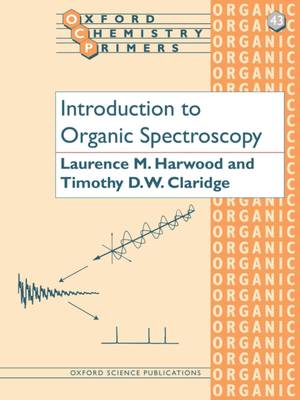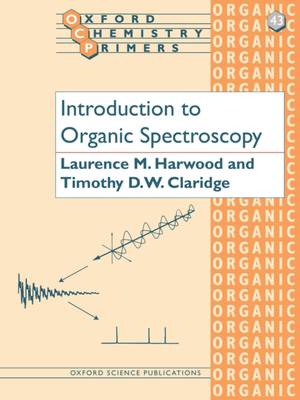
Je cadeautjes zeker op tijd in huis hebben voor de feestdagen? Kom langs in onze winkels en vind het perfecte geschenk!
- Afhalen na 1 uur in een winkel met voorraad
- Gratis thuislevering in België vanaf € 30
- Ruim aanbod met 7 miljoen producten
Je cadeautjes zeker op tijd in huis hebben voor de feestdagen? Kom langs in onze winkels en vind het perfecte geschenk!
- Afhalen na 1 uur in een winkel met voorraad
- Gratis thuislevering in België vanaf € 30
- Ruim aanbod met 7 miljoen producten
Zoeken
Omschrijving
This up-to-date account of key areas in modern organic spectroscopy describes the four major instrumental methods used routinely by organic chemists: ultra-violet/visible, infra-red, nuclear magnetic resonance spectroscopy, and mass spectroscopy. It provides a concise introduction to the physical background of each, describing how molecules interact with electromagnetic radiation or how they fragment when excited sufficiently, and how this information may be applied to the determination of chemical structures. It also includes simple descriptions of instrumentation and emphasizes modern methodology throughout, such as the Fourier-transform approach to data analysis. Each chapter concludes with problems to test readers' understanding of organic spectroscopy.
Specificaties
Betrokkenen
- Auteur(s):
- Uitgeverij:
Inhoud
- Aantal bladzijden:
- 96
- Taal:
- Engels
- Reeks:
- Reeksnummer:
- nr. 43
Eigenschappen
- Productcode (EAN):
- 9780198557555
- Verschijningsdatum:
- 5/12/1996
- Uitvoering:
- Paperback
- Formaat:
- Trade paperback (VS)
- Afmetingen:
- 190 mm x 245 mm
- Gewicht:
- 181 g

Alleen bij Standaard Boekhandel
Beoordelingen
We publiceren alleen reviews die voldoen aan de voorwaarden voor reviews. Bekijk onze voorwaarden voor reviews.









